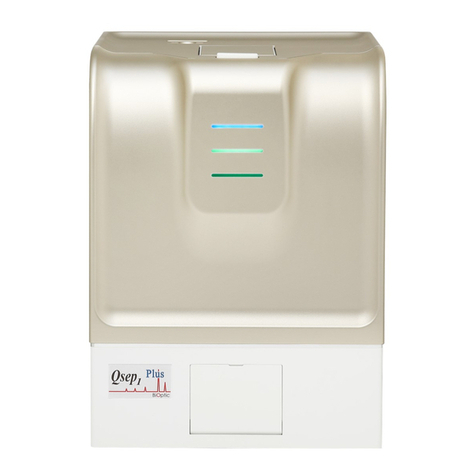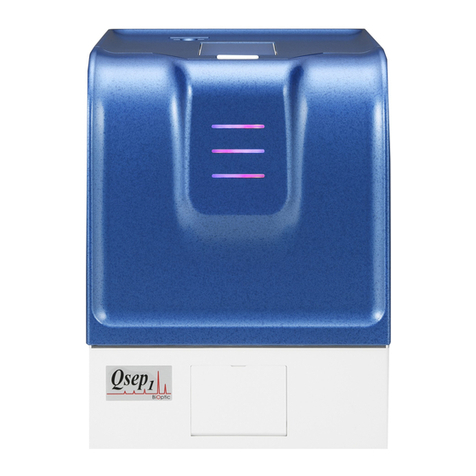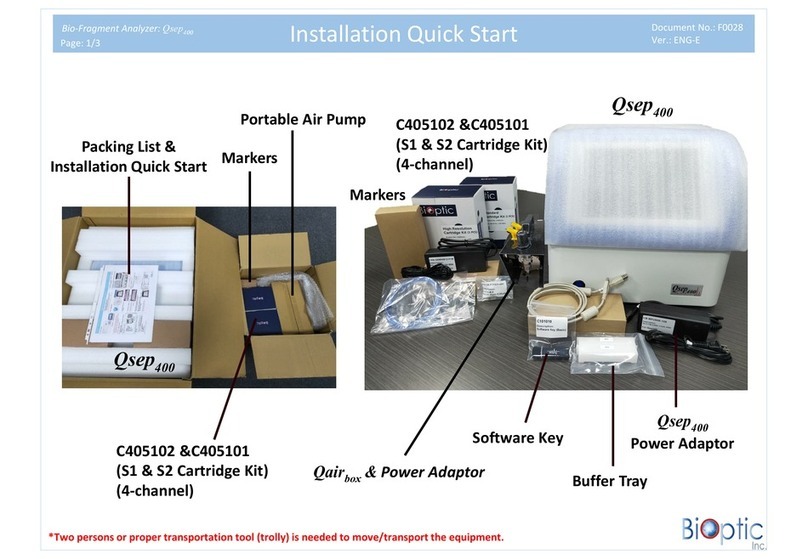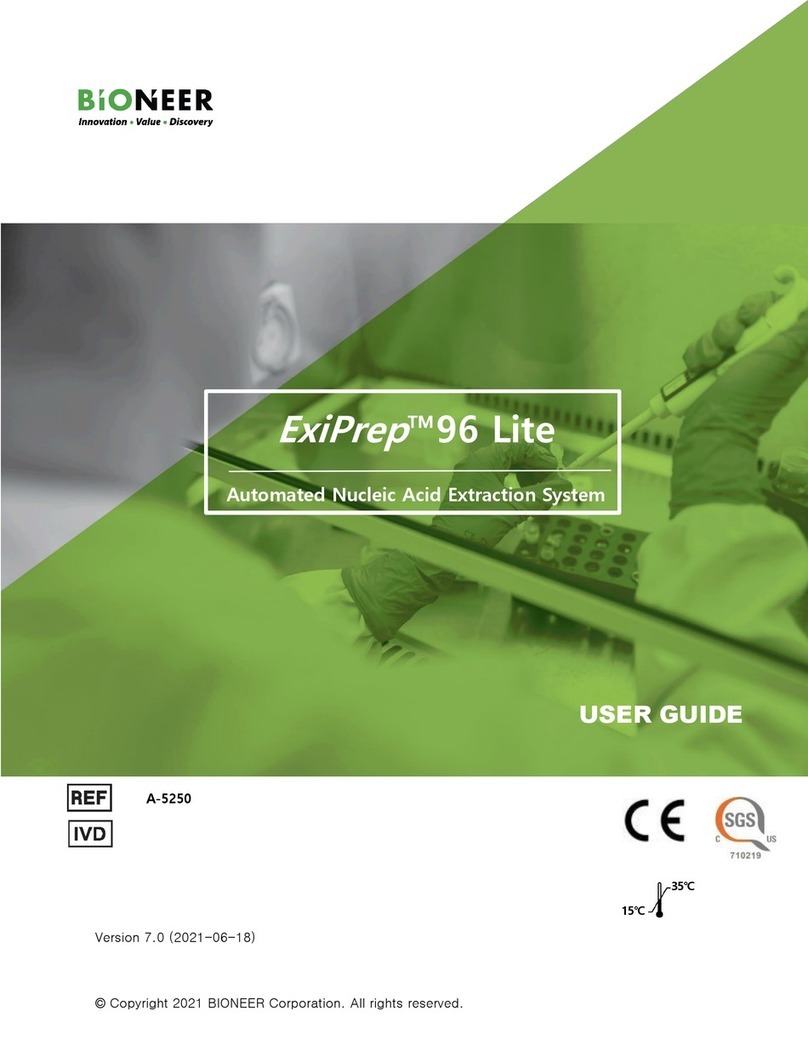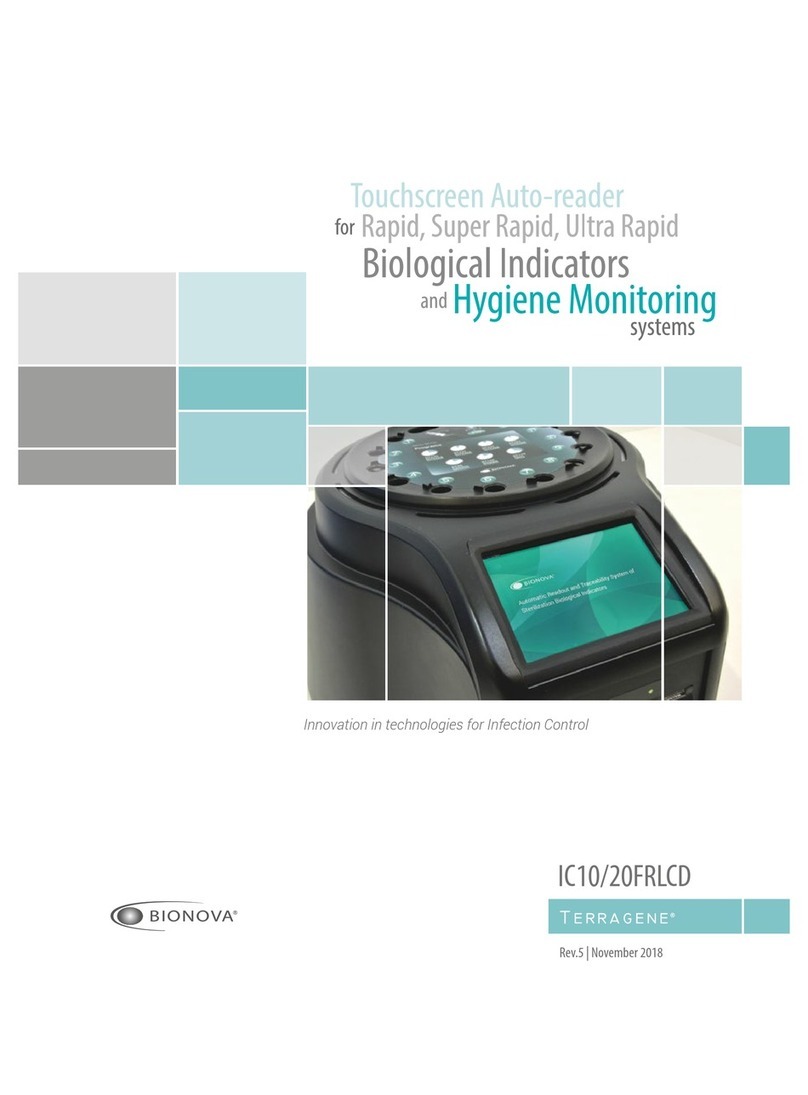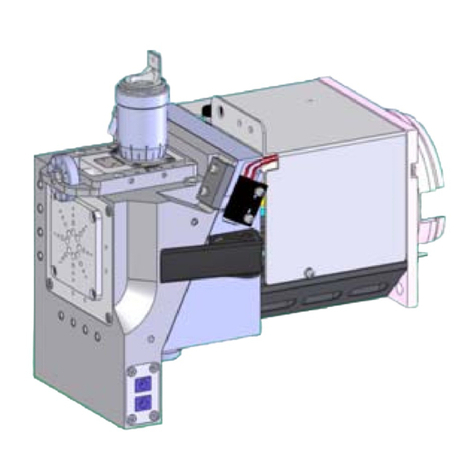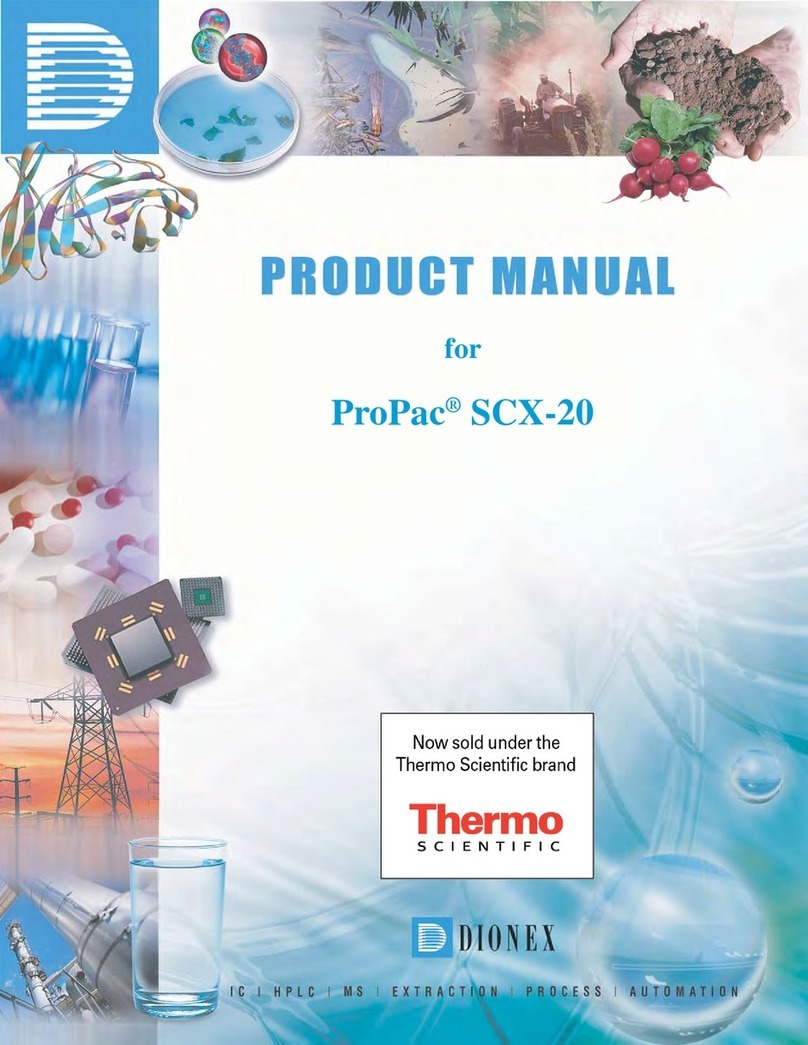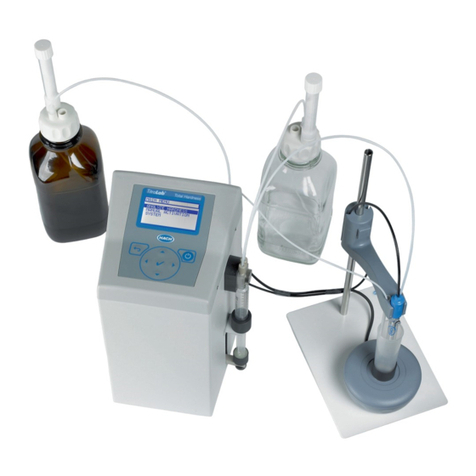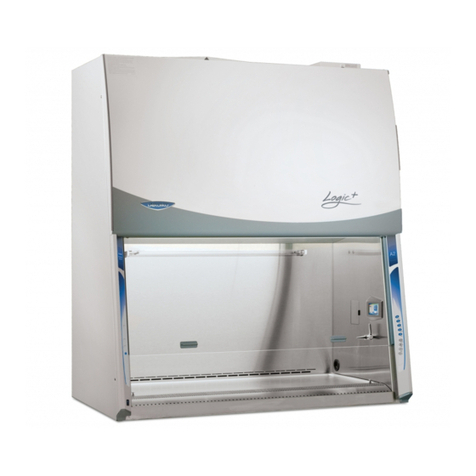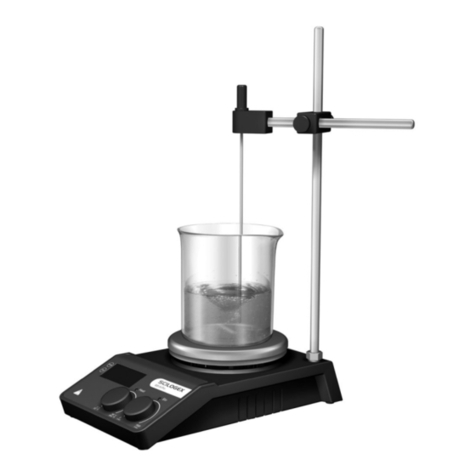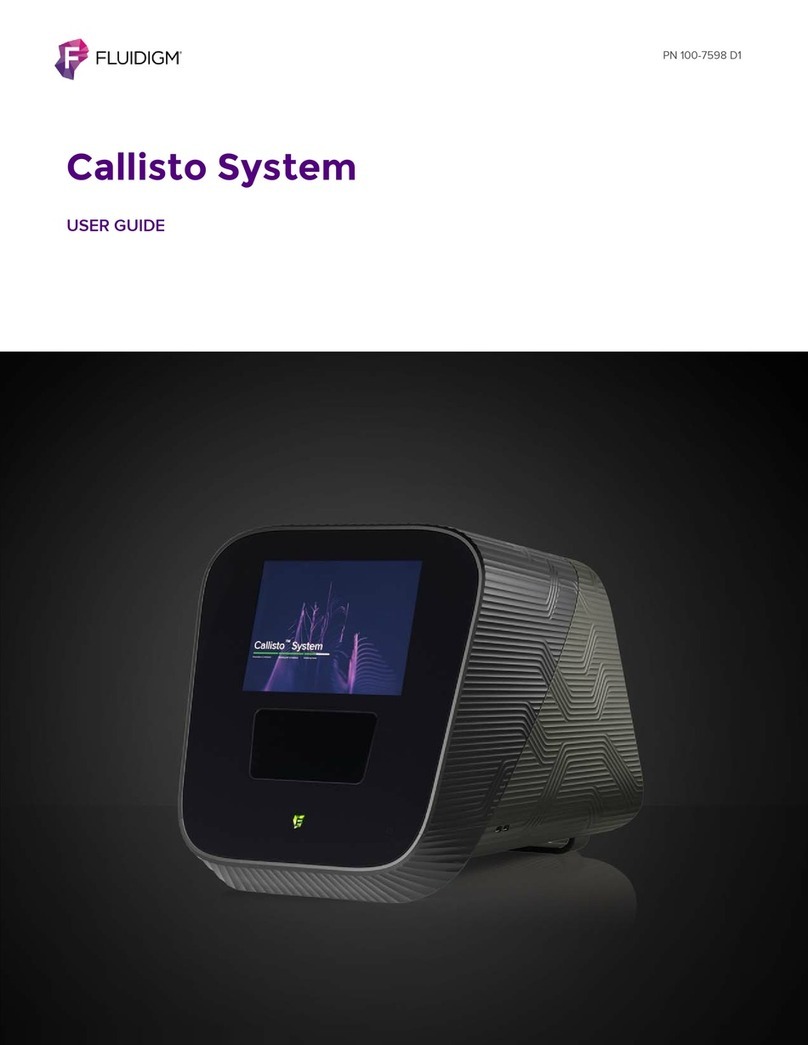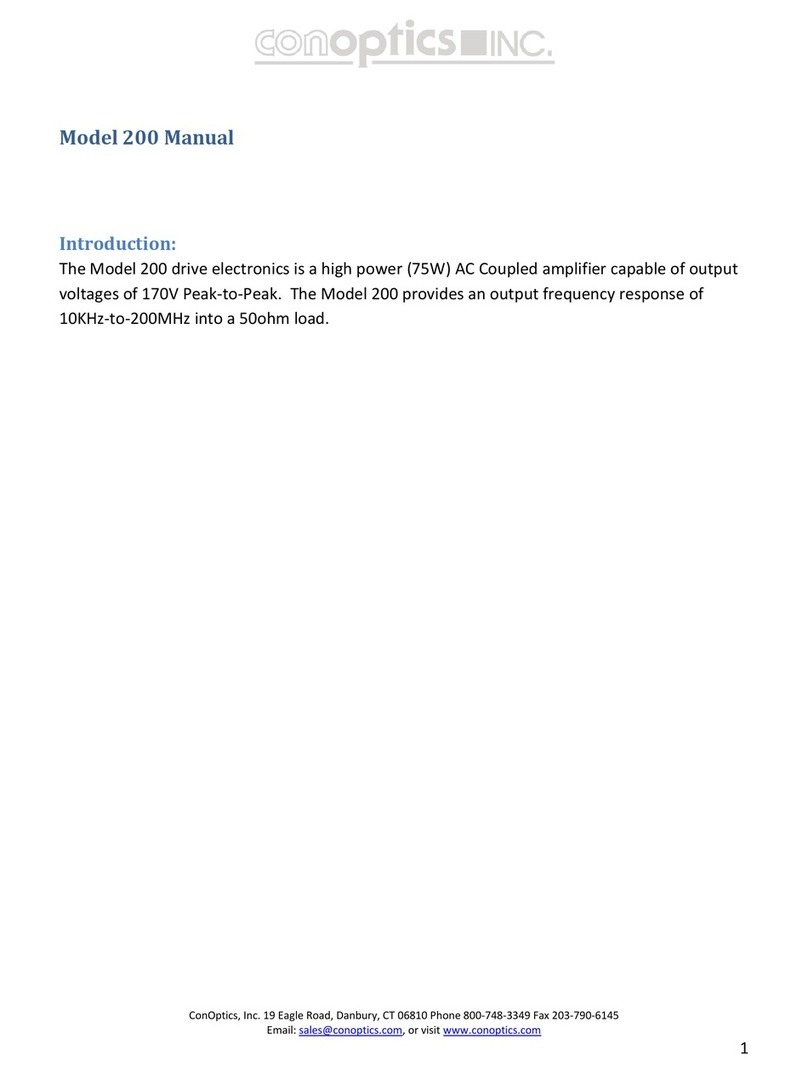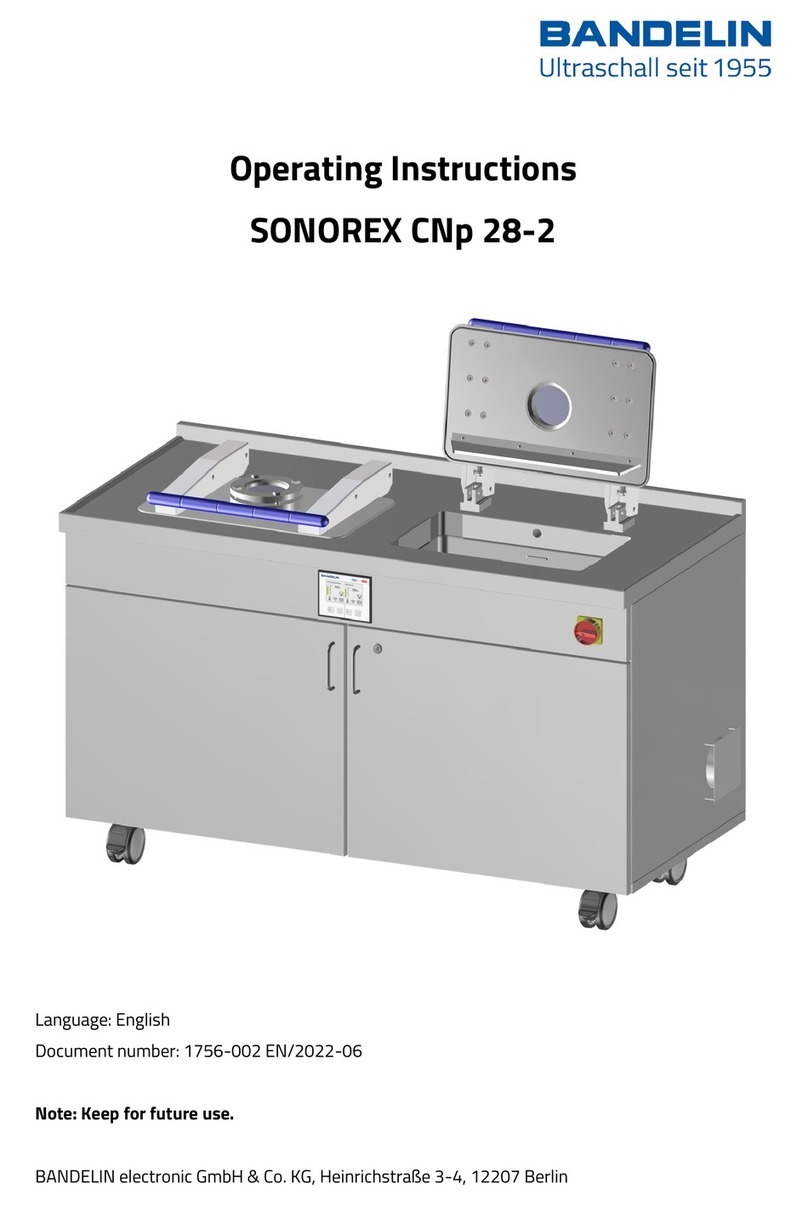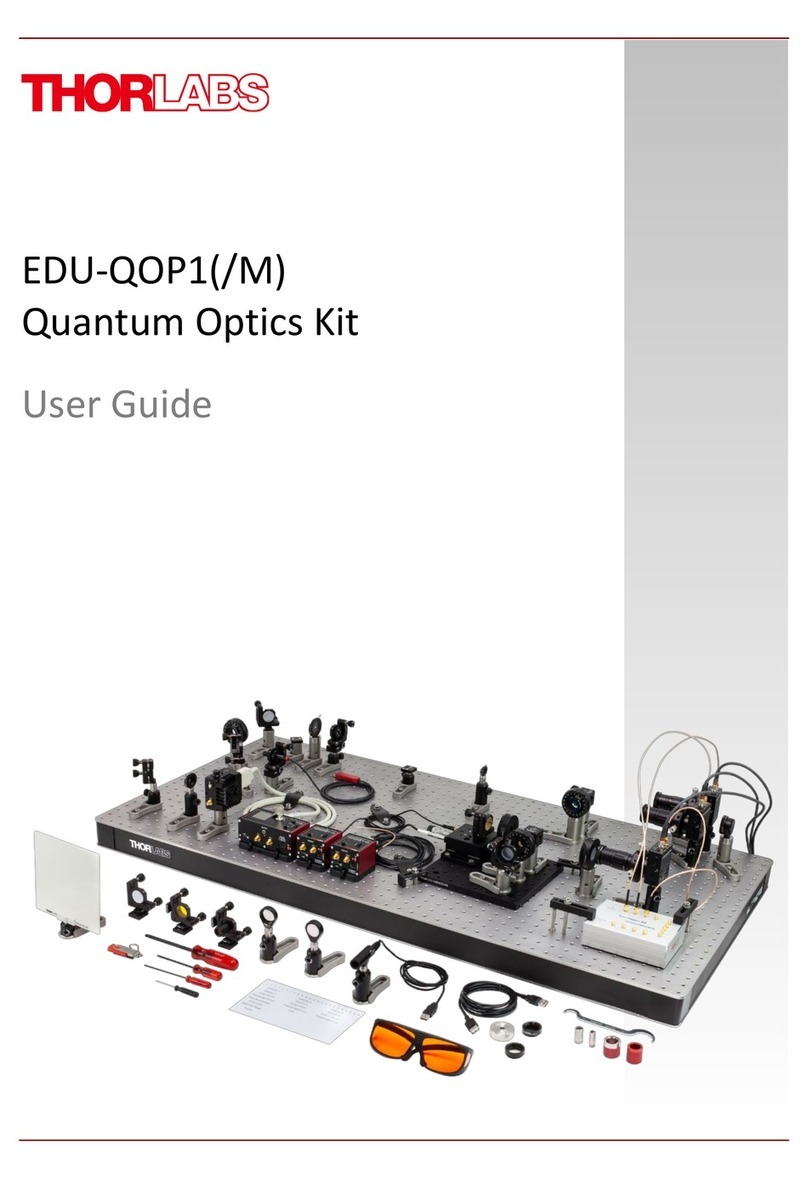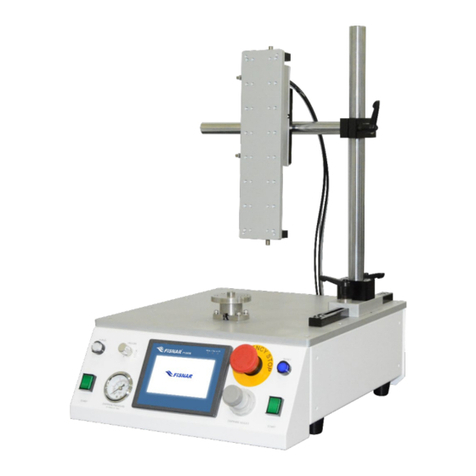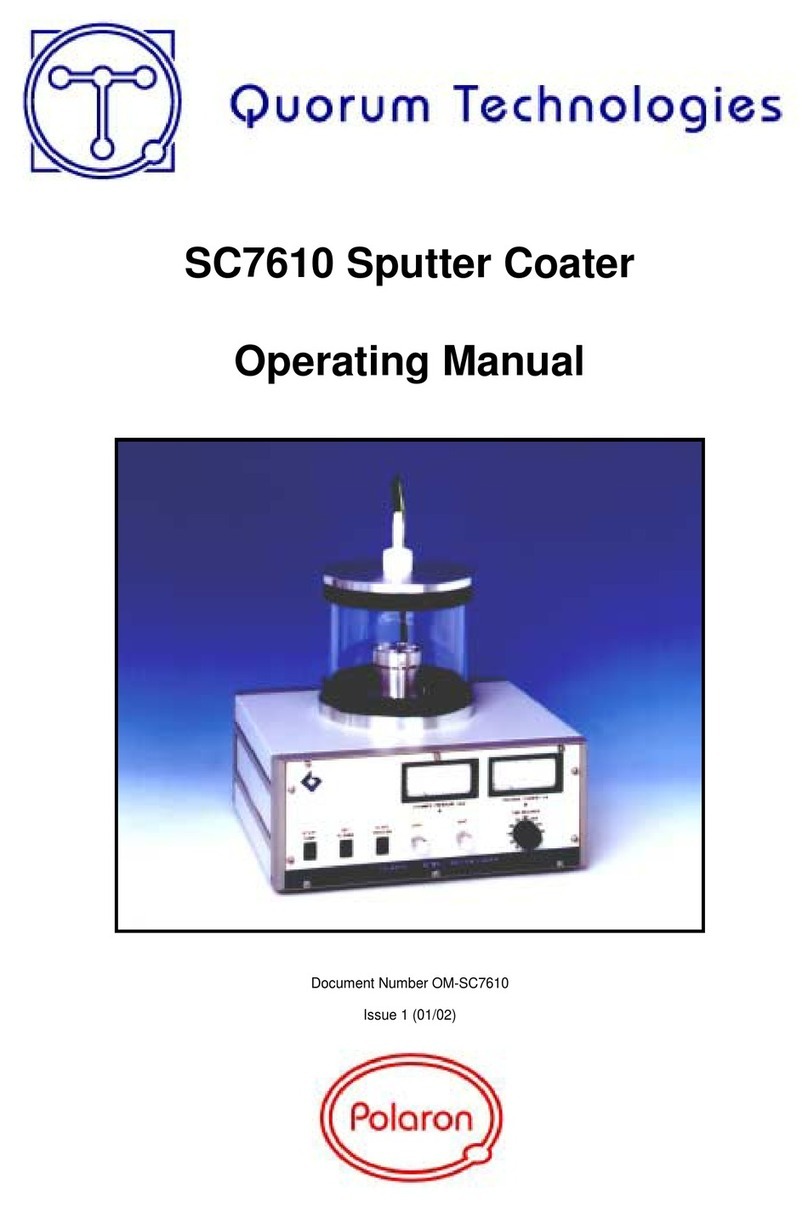BiOptic Qsep Series User manual

BiOptic Inc.,
4F., No.108-3, Minquan Rd., Xindian Dist., New Taipei City 23141, Taiwan (R.O.C.)
www.bioptic.com.tw
Revolution
Qsep400 Operation Manual
--- Hardware

2
Welcome........................................................................................................................3
Copyright and Trademarks........................................................................................3
Symbols of Qsep Series..................................................................................................3
Limitation of Liability .................................................................................................4
Applications..................................................................................................................4
Packing List..................................................................................................................4
Cautions........................................................................................................................6
1. Qsep400™Instrument..................................................................................................9
1.1 Qsep400™ Front View................................................................................................9
1.2 Qsep400™ Back View...............................................................................................11
1.3 Qsep400™ Top View.................................................................................................12
2. Installation Instruction..........................................................................................13
2.1 Environment Requirements................................................................................13
2.2 Power Considerations..........................................................................................14
2.3 Hardware Installation .........................................................................................15
2.3.1 Qsep400™ Installation...........................................................................................15
3. Qsep400™ Quick Start...............................................................................................16

3
Welcome
Thank you for purchasing Qsep™ Series single channel capillary electrophoresis
system. Now you can experience this high-performance, fully-automated and easy-to-
use system.
Copyright and Trademarks
Copyright © BiOptic Inc.
All rights reserved. Reproduction, adaptation, or translation of this manual is
prohibited without prior written permission of BiOptic Inc., except as allowed under
the copyright laws.
Qsep™ Series and Q-Analyzer™ are registered trademarks of BiOptic Inc.
Microsoft Windows is registered trademarks of Microsoft Corporation.
Product and company names listed are trademarks or trade names of their respective
companies.
Symbols of Qsep Series
Symbol
Description
CE mark for European Conformity.
FCC mark of the United States Federal Communications Commission.
FCC ID for RFID Module: 2AUQB

4
Limitation of Liability
Qsep™ Series Bio-Fragment Analyzer, Q-Analyzer™software, and all related reagents
are designed for the use of electrophoresis analysis in general bio-chemistry
laboratory. If you use it for profit, diagnosis, or other non-research purposes
experiments, the company is not responsible for the accuracy and reliability of the
result and the safety of operation.
BEFORE ATTEMPTING TO OPERATE THE INSTRUMENT, READ ALL PRODUCT
MANUALS AND FOLLOW THE INSTRUCTIONS.
BiOptic Inc. assumes no liability whatsoever for any personal injury, property damage,
or other loss resulting from not complying or familiar with the manuals, or improper
operation of the devices.
Applications
Genetic Profile Screening
Amplified Fragment Length Polymorphisms
Bacterial/Viral Genotyping and Identification
DNA Fragment/PCR Product Analysis
Rapid Analysis of Genomic DNA Samples
RNA Analysis
Protein Analysis
Packing List
Each Qsep™ Series Instrument package comes with the following:
Qsep™ Series CE Instrument
Qsep™ Series Standard cartridge Kit (C405101)
Qsep™ Series High resolution cartridge Kit (C405102)
Power Cord with Adapter
USB Cable

5
Software Key (Basic edition)
Installation Disc including Q-Analyzer™ for Qsep400 and Qsep™ Series Operation
Manual
*Note: The Software key contains 8GB storage space, Q-Analyzer™ for Qsep400 and
Qsep™ Series Operation Manual, including Hardware version and Software version.

6
Cautions
Qsep™ Series are capillary electrophoresis instruments driven by high voltage.
Carefully read and thoroughly comply with the following instructions to maintain the
integrity of the equipment, the reliability of results, and the safety of operation.
Keep Qsep™ Series away from other electronic device and voltage sources.
1. Only the components and consumables provided by BiOptic Inc. are
suggested to use.
2. DO NOT perform the following actions:
•Disassemble Qsep™ Series instrument and its associated parts
•Bumps or jolts to Qsep™ Series
•Move the instrument or remove any connected external equipment,
such as computers and air pumps, while Qsep™ Series are in action
•Open the sample door or cartridge door while Qsep™ Series are in
action
•Remove the cartridge while Qsep™ Series are in action
•Power off Qsep™ Series before confirming Qsep™ Series are inactived
3. Store the cartridge upright; do not lay the cartridge on a table horizontally
or place it upside down.
4. Store the cartridge in the calm-shell container (Cartridge needs to be stored
in a proper environment as the instructions of cartridge unpacking guide to
maintain its lifetime and quality).
5. Ensure the cartridge is taking out from Qsep400™ before shutting down or
disconnecting instrument. Or ensure the cartridge is placed at PARK position
before shutting down or disconnecting Qsep™ Series. Failure to do so will
cause dryness of the gel at the cartridge tip, which will damage the cartridge.
6. Before operating Qsep™ Series, ensure the buffer tray is placed properly.
7. Dilute the PCR DNA test sample to 1
20 with our dilution buffer before
running the test for obtaining better result and retaining the lifetime of the
cartridge. You can adjust the dilution ratio after primary test runs.
8. Ensure that the test sample, alignment marker, cartridge, and buffer tray
have been removed from the instrument before transporting or shipping.
9. If the buffer solution spills out on the platform inside the instrument, wipe
it with tissue and clean it up immediately.
10. Ensure that the main power of the instrument has been shut down and all

7
the test materials have been removed before cleaning Qsep™ Series .
11. User can also use N2 gas as an air source to insure the air quality and prevent
damages to the devices caused by dirty air.
12. Make sure to press the plastic connection ring before pulling the air tube out
from the back of the instrument.
13. Release the condensation water in the external air pump periodically and
check water level before each use to avoid the mist damage the devices of
Qsep™ Series.
14. To cut off the power please disconnect the power plug.
15. Please clean the instrument with dry cloth. For other maintenance, please
contact local distributor.
16. Please use the MAINS power cord within adequate rating.
17. The conditions of transportation and storage: Temperature -30 to +60°C
Humidity 20 to 80% RH, non-condensing.
*Note: Strongly suggest performing this step whenever you start to operate Qsep™
Series .
Warning: Qsep400™are high-voltage Multiple-channel electrophoresis system.
Please follow the operation manual and laboratory safety guidelines for system
operation. Do not remove covers. For operation and safety questions, please
contact BiOptic Inc. at the official website or with your local BiOptic representatives.

8
System Overview
Qsep™ Series are a fully-automated CE system developed by BiOptic Inc., which uses
pen-shaped disposable gel-cartridges to improve efficiency. Time-consuming manual
procedures such as gel preparation, sample loading, and capillary changing are no
longer required. Further, the information will be obtained easily with the fully-
automated Qsep™ Series. Qsep400™isdesigned to accommodate the standard 96-well
and 12 well PCR plate, respectively.
Qsep™ Series’s compact design helps you to set up and operate the instrument
intuitively. The disposable gel-cartridge with integrated pre-programmed test
methods makes capillary electrophoresis experiments no longer a painful procedure
that requires well-trained operators. No more worries about operation and human
errors caused by different operators which affect the accuracy and reproducibility of
the results.
The following sections will describe the product overview, the functions of Qsep™
Series instruments and the gel-cartridge. Please read through this section and get
ready to be amazed with the power of Qsep™ Series.
Caution: The operator of this instrument is advised that if the equipment is
operated in a manner not specified in this manual, the protection provided by the
equipment may be impaired.

9
1. Qsep400™Instrument
1.1 Qsep400™ Front View
Figure 1-1 Qsep400™ front view
A. High voltage alert lamp:
The red LED blinks when the high voltage source of the capillary electrophoresis
is ON.
B. Main Power switch:
The blue LED lights up when it is turned on.
C. Operation room:
Open the onboard computer module. A rotation platform includes three regions
for operation which are sample array region (i), marker array region (ii), and buffer
solution region (iii). (Figure 1-2)

10
Figure 1-2 Rotation platform

11
1.2 Qsep400™ Back View
Figure 1-3 Qsep400™ back view
A. Air pressure gauge:
Display the value of the pressure operating in Qsep400™.
B. Air flow Inlet Port:
Connect to an external pump using an 1/8 inches tube.
C. USB Port:
Connect to a computer.
D. Power Connector
E. Network Connector
F. Qsep400™Serial Number

12
1.3 Qsep400™Top View
Figure 1-4 Qsep400™top view
A. Cartridge door

13
2. Installation Instruction
A suitable operating environment is essential to ensuring the best performance of
Qsep™ Series.
2.1 Environment Requirements
⚫The optimal operating temperature of Qsep™ Series are 18°C~26°C (65°F ~78°F).
⚫The optimal operating humidity of Qsep™ Series are 40%~95% RH, non-
condensing.
⚫The operating altitude of Qsep™ Series are -20m~2000m (-65ft~6500ft).
For proper capillary electrophoresis operation, do not place Qsep™ Series on a
vibrating surface or near vibrating objects. For convenient access for loading and
installation, it is recommended to leave approximately 711 mm (28 inches) clear space
above the counter space or table. Allow approximately 76 mm (3 inches) of clear space
at the rear and to the side of the instrument for proper air ventilation and electrical
connections.
Warning: Do not store, transport, or use Qsep™ Series under conditions which the
temperature fluctuation could cause water condensation inside the instrument.
Condensation may damage electronic devices of the instrument. If the instrument was
transported in cold weather, do not remove the instrument from its original box
immediately because it might cause condensation. Make sure Qsep™ Series have
been warmed up inside the original box before you start unpacking.

14
2.2 Power Considerations
The input voltage of Qsep400™ instrument is 24V DC, and the maximum current is
2.62A. A suitable power adapter with cord, SINPRO MPU60B-108, is included in the
package (100~240V AC, 47~63Hz). The dimensions are 12.2cm(L)*5.2cm(W)*3.5cm(H)
and weight of the instrument is 26Kg. Direct control the instrument with onboard
computer. Connect the air source within the range of 50psi~75psi.
*Note: Use a surge protector outlet for the Qsep series and the computer to avoid
electromagnetic interferences and damages to the inner electrical devices.

15
2.3 Hardware Installation
Place Qsep™ Series instrument on a stable platform, and ensure it is away from water
and any other high-power electronic devices. Qsep™ Series need to be operated in a
clean and well-ventilated environment. Remove the power adapter from the package
and attach it with a suitable power cord.
When using the portable air pump as the air source, please pay attention to the
condensation water that might develop inside the portable air pump. If this occurs, be
sure to release the condensation water before using Qsep™ Series. If you need to
continuously operate Qsep™ Series, check the air pump every 12 hours to avoid the
mist of condensation water damaging the devices of Qsep™ Series.
2.3.1 Qsep400™ Installation
Place Qsep400™instrument on a stable platform, and ensure it is away from water and
any other high power electronic devices. Qsep400™needs to be operated in a clean
and well ventilated environment. Remove the power adapter from the package and
attach it with a suitable power cord. Connect Qsep400™to a properly grounded power
plug or power supply. Connect the air source, within the range of 0.3Mpa~0.5Mpa
(45psi~75psi), to the air inlet port at the back of Qsep400™. Please ensure the quality
of air source and prevent the damage caused by humid and dirty air. An air pump with
filter is suggested to be the air supplier. Alternative, you can use N2 gas as an air
source.
In Qsep400™instrument, it is built-in the operation software, Q-Analyzer™.
After checking all connections, you are now ready to use Qsep400™. Please follow the
steps of operation quick start to operate the electrophoresis analysis test.
Figure 2-1 Qsep400TM Hardware installation

16
3. Qsep400™Quick Start
Follow the steps to start:
Step 0. install the software and hardware.
Step 1. Turn on the power
Step 2. Launch Q-AnalyzerTM for Qsep400
※The message box of "Purge function check" will pop-up after connected. Follow
the instruction and proceed the check before using is recommended. (User needs to
perform the purge function check every 6 months.)
Step 3. Buffer and Cartridge Preparation
Step 3-1. Unpacking Cartridge: Please follow the steps of “Unpacking guide” inside
the cartridge box

17
Step 3-2. Add separation buffer into “S” well and add diH2O into other wells
※Fill each well of the buffer tray 80% full
Step 4. Click “Change Buffer”
Step 5. Allocate the buffer tray into the tray holder
Step 6. Alignment Marker (AM) Preparation: Add at least 20 μl Alignment Marker
into the 0.2 ml tube (4 tubes) and add 10 μl Mineral Oil on the top of Alignment
Marker
※Spin down and make sure there is no air bubble in the 0.2 ml PCR tubes
Step 7. Allocate Alignment Marker at “AM” row on the holder
※Make sure tubes with alignment marker are at the assigned position

18
Step 8. Hold the plate by your hand and press down the tube of Alignment Marker
tightly into the well by thumb
Step 9. Allocate your samples (sample volume ≥ 20 μl) Spin down and make sure the
sample is in the bottom of tube and no air bubble appears
※The lid of 0.2 ml tube that placed at A1- A12 position must be removed/cutoff
Step 10. Click “Park”, to move the holder back to the park position and click “Close
Sample Door”
Step 11. After unpacking cartridge, open the cartridge door and insert multi-channel
cartridge
※L-shape connector of cartridge should follow the L-shape guiding groove inside
the instrument
Step 12. Press the cartridge door to close it
Step 13. Click “Latch” The Cartridge Information will be displayed on the screen

19
Step 13-1. New Cartridge Calibration New cartridge needs to be calibrated before
using. Please proceed with the following steps
※The storage and transportation condition may influence the cartridge and cause
unstable current. If current (gray line) is unstable during HV check, please repeat this
step 2-3 times.
-Click “Calibrate”
※Make sure to place alignment markers (C109200) at right position

20
Step 14. To analyze samples, click on the blank column and designate the sample
locations, test method, and result name following steps 14-1 to 14-4
Step 14-1. “Sample Position”
-Mark the position of sample on the plate and then click “OK”
Step 14-2. “Method”
-Select a proper analysis method for your application.
Other manuals for Qsep Series
1
This manual suits for next models
1
Table of contents
Other BiOptic Laboratory Equipment manuals

